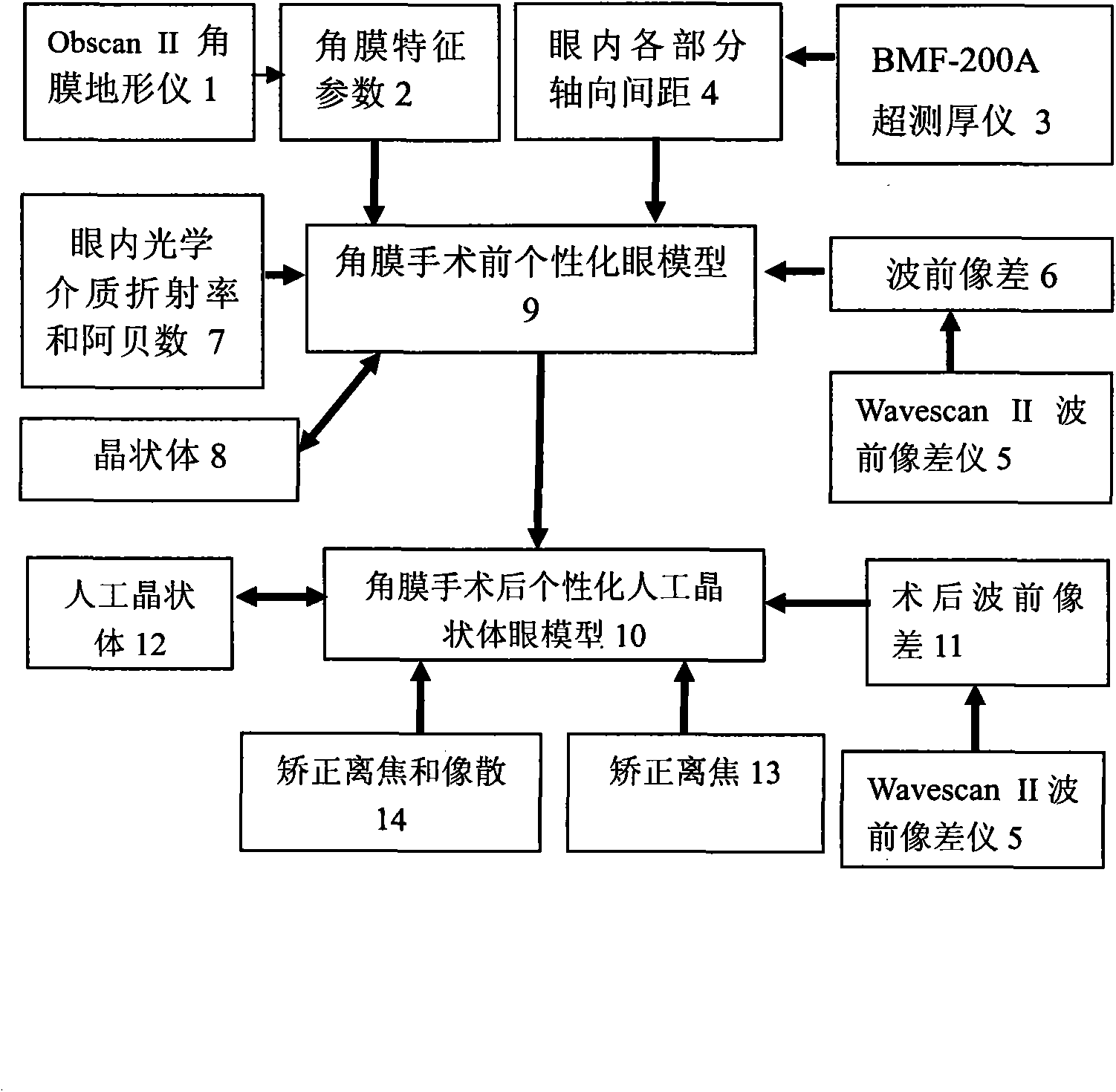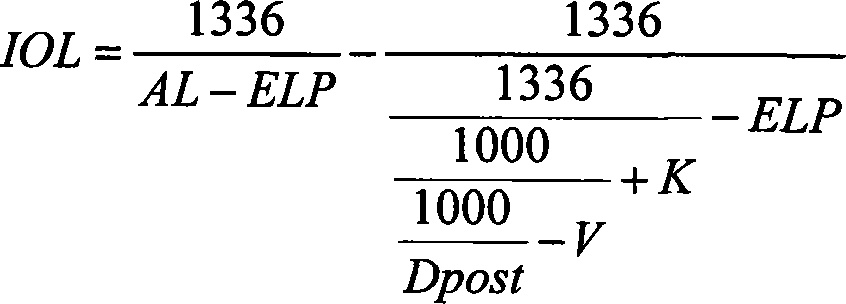After-cornea refractive surgery artificial lens design
A technique of intraocular lens and refractive surgery, applied in the field of vision correction and cataract treatment, can solve the problems of inaccurate degree, refractive abnormality, uncorrectable astigmatism, etc., and achieve the effect of correcting defocus and astigmatism
- Summary
- Abstract
- Description
- Claims
- Application Information
AI Technical Summary
Problems solved by technology
Method used
Image
Examples
Embodiment Construction
[0024] specific implementation
[0025] Such as figure 1 As shown, the corneal topograph Orbscan II [1] was used to measure the curvature of the front and rear surfaces of the cornea and the height relative to the reference sphere. The height difference of the corneal surface along the sagittal direction is converted into the height difference along the optical axis direction, and the aspheric surface of the cornea is fitted by a high-order aspheric function [2].
[0026] BMF-200A Ultrasonic Thickness Gauge [3] is used to measure the axial spacing of the various components of the eye axis, including corneal thickness, anterior chamber depth, lens thickness and vitreous thickness [4].
[0027] The Wavescan II wavefront aberration instrument[5] is used to measure the wavefront aberration of the human eye[6], and the aberration data of the individual human eye is added to the optimization function of the optical design software Zemax to define the actual aberration of the human ...
PUM
 Login to View More
Login to View More Abstract
Description
Claims
Application Information
 Login to View More
Login to View More - R&D
- Intellectual Property
- Life Sciences
- Materials
- Tech Scout
- Unparalleled Data Quality
- Higher Quality Content
- 60% Fewer Hallucinations
Browse by: Latest US Patents, China's latest patents, Technical Efficacy Thesaurus, Application Domain, Technology Topic, Popular Technical Reports.
© 2025 PatSnap. All rights reserved.Legal|Privacy policy|Modern Slavery Act Transparency Statement|Sitemap|About US| Contact US: help@patsnap.com


